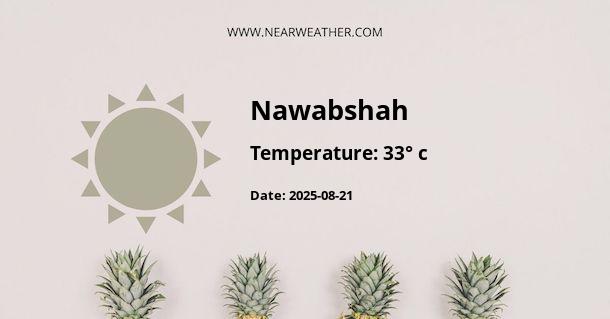Nawabshah Climate and Weather Year Round
Nawabshah, also known as Benazirabad, is a city located in the Sindh province of Pakistan. It has a hot desert climate characterized by extremely high temperatures and low rainfall throughout the year. Let's take a closer look at the climate and weather conditions in Nawabshah year round.
Temperature
Nawabshah experiences scorching hot temperatures for most of the year. The city lies in a region known as the "Hot Belt" of Pakistan. Summers are particularly brutal, with temperatures often exceeding 40 degrees Celsius (104 degrees Fahrenheit). The hottest months are May and June, where temperatures can soar above 45 degrees Celsius (113 degrees Fahrenheit).
Even during the winter months, Nawabshah remains relatively warm. December and January are the coolest months, with average temperatures ranging between 15-20 degrees Celsius (59-68 degrees Fahrenheit). Frost and freezing temperatures are rare occurrences in the city.
The extreme heat in Nawabshah is a result of its geographical location, situated in the southern part of the country with minimal relief from nearby bodies of water.
Rainfall
Nawabshah is characterized by low rainfall throughout the year, making it a semi-arid region. The city receives most of its rainfall during the monsoon season, which typically occurs from July to September. During this period, Nawabshah experiences brief but intense thunderstorms that provide some relief from the scorching heat.
The average annual rainfall in Nawabshah is around 150-200 millimeters (5.9-7.9 inches). However, it is important to note that rainfall can vary significantly from year to year, and some years may experience even lower amounts of precipitation.
Humidity
Due to its desert climate, Nawabshah experiences low humidity levels for most of the year. The dry air can make the heat feel even more intense, as there is less moisture to provide relief. Humidity levels range from 20% to 40% on average.
Wind
Nawabshah experiences moderate winds throughout the year. The prevailing winds come from the west and southwest directions. These winds help in providing some relief from the high temperatures by bringing in slightly cooler air from other regions.
Sandstorms
Given its desert climate, Nawabshah is occasionally affected by sandstorms. These sandstorms occur when strong winds blow over the arid and sandy regions surrounding the city, picking up loose sand particles and creating a dusty haze in the air. Sandstorms can reduce visibility and create hazardous conditions for outdoor activities.
Climate Challenges
The extreme heat and low rainfall in Nawabshah present several challenges for the city and its residents. The high temperatures pose health risks, especially for vulnerable populations such as the elderly and young children. Adequate hydration and protection from the sun are essential during the hot months.
The scarcity of rainfall also affects agricultural practices in the region. Farmers rely heavily on irrigation systems to sustain their crops. Water conservation and efficient irrigation techniques are crucial for maintaining agricultural productivity in Nawabshah.
Conclusion
Nawabshah experiences a hot desert climate with scorching temperatures and low rainfall throughout the year. The city's extreme heat and minimal relief from nearby bodies of water make it one of the hottest regions in Pakistan. The low humidity levels and occasional sandstorms further contribute to the challenging weather conditions. Understanding and adapting to these climate challenges are vital for the well-being of Nawabshah's residents and the sustainability of its agriculture.
A - Nawabshah's Latitude is 26.248329 & Longitude is 68.409554.
A - Weather in Nawabshah is 17° today.
A - Climate Conditions in Nawabshah shows scattered clouds today.
A - Humidity in Nawabshah is 16% today.
A - Wind speed in Nawabshah is 11.56 km/h, flowing at 359° wind direction. today.
